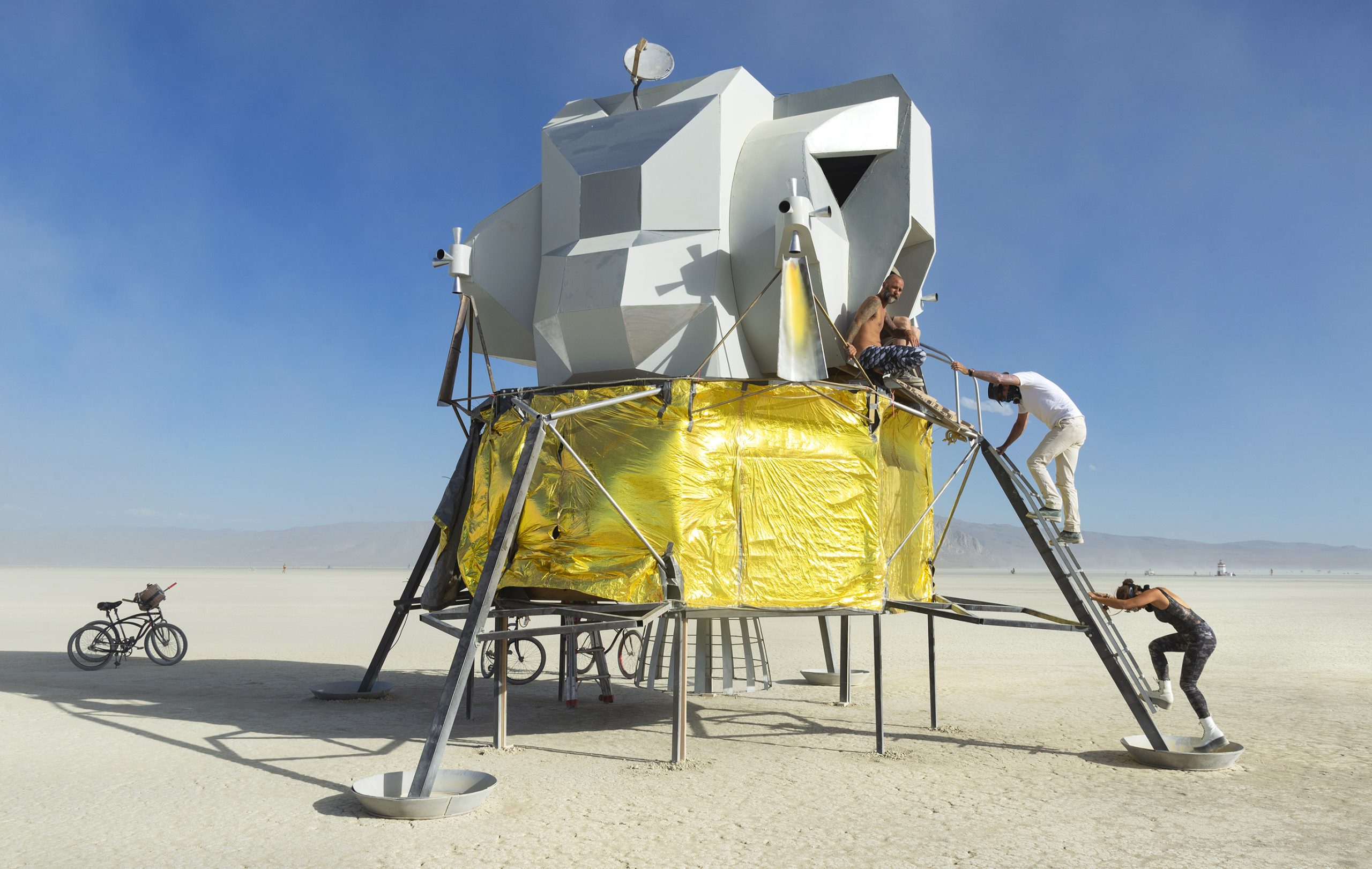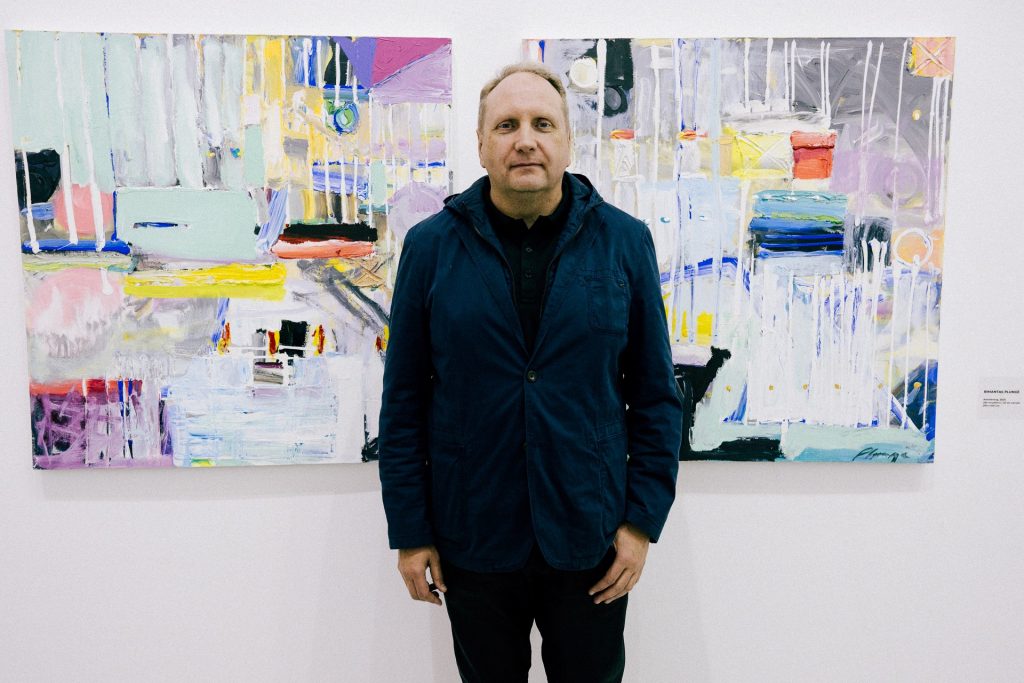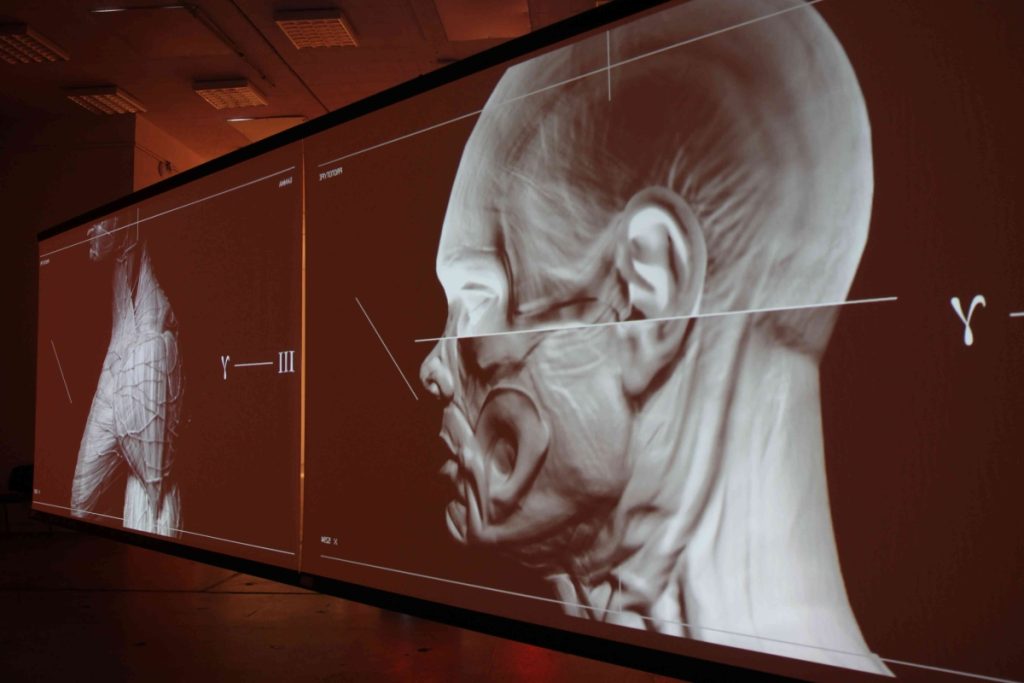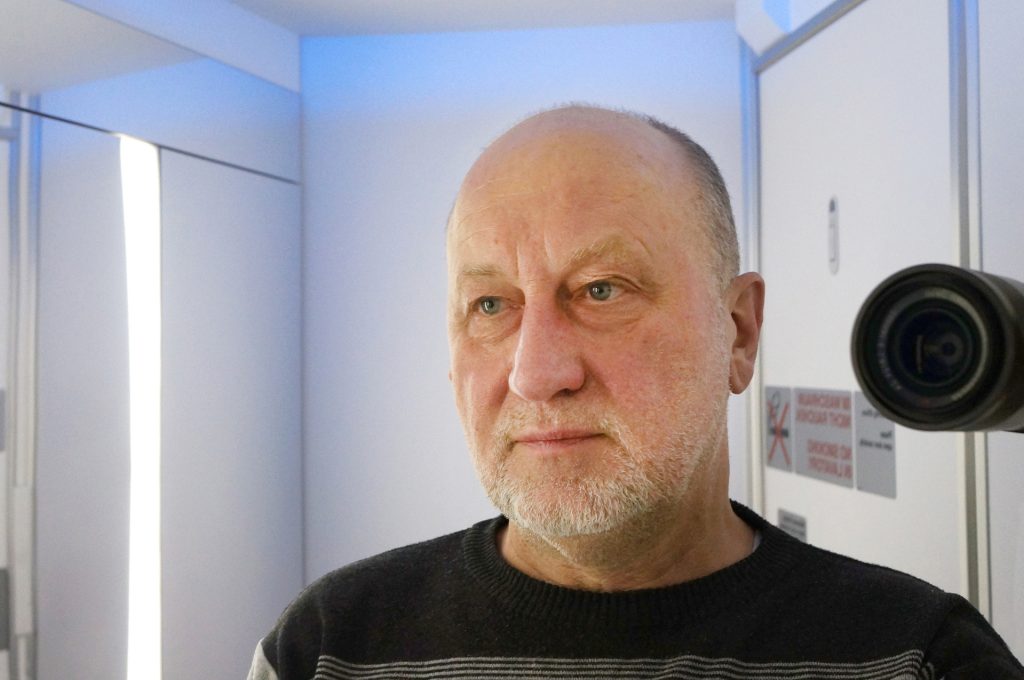VMU Faculty of Arts Teachers on AI Risks and Interdisciplinarity

Photo by Romualdas Požerskis. Exhibition “Crazy Sculptures in the Nevada Desert”
“Regarding artificial intelligence (AI), like everyone else, I am perplexed. A third-year student presented photographs that employed AI to depict the emotions of the people photographed using colours. Who owns this work? It reminds me of a story from ten years ago when a photographer left his camera in the jungle, a monkey took pictures with it, and later there were legal battles over the ownership of the photographs,” reflects Romualdas Požerskis, a photographer and a professor at the Faculty of Arts of Vytautas Magnus University (VMU).
The use of AI in art, as in other fields, brings considerable benefits by automating various tasks and saving people’s time. However, it also raises many questions – not only about copyright issues but also about the potential impact on artists’ livelihoods, creativity, and the use of artists’ work to train AI models. Rimantas Plungė, another professor at the VMU Faculty of Arts, says that it is not yet clear which direction this technology will steer the development of art and other fields, but today it is fraught with paradoxes and questions.
“On one hand, there is a burst of creativity, aided by technical tools that are improving, simplifying, and becoming accessible to every computer or smart device user. On the other hand, it certainly raises many moral questions: after all, AI learns from professional artists, utilising their styles and unique creative traits developed by the artists themselves. Paradoxically, the more distinctive an artist is, the easier it is for AI to adopt their creative traits,” notes Prof. Plungė.
Artists agree that artificial intelligence can be a useful tool, especially for performing mechanical, technical tasks that require high precision or repetition, such as automating colour correction or cleaning up audio. However, in tasks requiring creativity, AI cannot match a human, asserts composer and VMU professor Titas Petrikis. “True artistic sensibility, personal experiences, and cultural context, which often determine artistic value, are human traits that cannot yet be completely replaced by technology,” Prof. Petrikis emphasises.

Prof. Dr. Titas Petrikis. Photo from VMU archive.
Interdisciplinarity in art – one of the signs of a turning point in Lithuania
Artificial intelligence is just one part of a broader trend in the art world: interdisciplinarity, which encourages artists to not only incorporate various fields – from social, natural, and other sciences to technology – but also to combine different art forms and media such as performance, video, painting, photography, music, and more.
“After the restoration of independence, when contemporary art began to take root in Lithuania, interdisciplinarity was one of the signs that a turning point had occurred in the country. When artists started to create interdisciplinary art, they began addressing not only artistic but also social, cultural, and political issues. Today, thanks to interdisciplinarity, contemporary art has firmly established itself alongside more traditional art forms, and many of its creators successfully represent Lithuania internationally,” explains Assoc. Prof. Tomas Pabedinskas, head of the Department of Contemporary Art at Vytautas Magnus University (VMU).

Assoc. Prof. Dr. Tomas Pabedinskas. Photo by Jonas Petronis.
According to Prof. Plungė, art is rapidly evolving nowadays as artists tackle increasingly complex social, philosophical, and existential ideas. “Art is like a qualitative study of the environment, aimed at understanding who I am, why I exist, what the world is like, and my relationship to it. In this context, combining various disciplines is a feature of modernity,” the VMU professor reflects on the importance of interdisciplinarity.
Art should not be superficial
The interviewees are involved in both artistic and creative activities as well as in teaching and training students. They believe that both in preparing young people for the future and in creating art, it is crucial to stay abreast of new technologies, discoveries, and social and cultural transformations. “I often consider how the overall background reflects my personal relationship with the world. As a doctor of social sciences, I believe that art should not be superficial and must address many questions, just as science does,” emphasises Prof. Plungė.

Prof. Dr. Rimantas Plungė. Photo by Matas Gineika.
There is no shortage of artists successfully applying different media or disciplines in their work, both in Lithuania and abroad. This year, at the Venice Biennale of Contemporary Art, the Lithuanian pavilion featured an exhibition titled “Inflammation” by artists Neringa Černiauskaitė and Ugnius Gelguda, and painter Marija Teresė Rožanskaitė. The exhibition, through a collection of paintings and sculptures, explored sensitive societal themes related to medicine, health, nature, and space. Moreover, Prof. Romualdas Požerskis has presented his exhibition “Crazy Sculptures in the Nevada Desert”, showcasing the U.S. festival “Burning Man”, recognised as the most unique and largest alternative art event in the world.
“Another striking and ongoing example is the interdisciplinary art group ‘Bionics’, founded by VMU New Media Art graduates Lina Pranaitytė and Urtė Pakers. It is also worth mentioning the internationally recognised artists and researchers from the Massachusetts Institute of Technology (MIT), visiting professors at VMU, Nomeda and Gediminas Urbonas. Their projects, such as ‘Swamp School’, integrate art with science and other fields, involving representatives from various disciplines,” notes Assoc. Prof. Pabedinskas.

BIONICS exhibition CODEX.PROTOTYPE. Photo from personal archive.
Student projects explore social and other issues
Interdisciplinarity in art and other fields fosters creativity and innovation by enabling specialists from various areas to collaborate and generate new ideas. One example of such collaboration is the joint projects undertaken by students of Creative Industries, Music Production, and New Media Art at Vytautas Magnus University (VMU). In these projects, students practically explore answers to social, cultural, and political problems.
“These works are exhibited in university and city spaces – they not only enrich the cultural landscape but also engage various social groups, fostering broader public discussion and understanding. In turn, such interdisciplinary projects encourage students to experiment with new technologies and media, which undoubtedly contributes to their development and enables them to discover unconventional ways of realising ideas, unimaginable within the confines of a single discipline,” asserts Prof. Petrikis, adding that such learning and creative processes prepare them for success in a changing cultural and technological environment.
Prof. Romualdas Požerskis, a photographer and a professor at the VMU Department of Contemporary Arts, says that the diversity of contemporary art and the intersections of disciplines can also be seen in the final theses defended by the department’s bachelor students.

Prof. Romualdas Požerskis. Photo from personal archive.
“About 30% of these involve works based on photography: these are psychological, social projects exploring landscapes, family, genders, and many other topics. Another 30% comprise video art, including short films with scripts, actors, editing, and sound. Another 30% are various installations involving lights, actions, and projections, as well as performances. Finally, the remaining 10% encompass a genre that is difficult to define, including computer games, card games, and autobiographical stories,” the professor lists.
According to the teachers, department students establish connections with various companies in Lithuania and abroad during their studies, such as photography studios in London and production companies, and work in various fields from communication, advertising, design, and publishing to managing cultural or creative industry institutions.
The latest technologies and the unique spirit of artes liberales
“The New Media Art programme at Vytautas Magnus University (VMU) is truly exceptional – and not just because it is a university programme. We prepare artists with a broad education who are familiar with both the social world and the cultural industries field. They also gain knowledge not only in artistic expression and gallery work but also in the commercial culture field, including radio, television, and production. Thus, a truly comprehensive education is provided, with students working alongside numerous curators and creators and learning multiple languages,” states Prof. Rimantas Plungė, highlighting the key advantages of one of the bachelor’s programmes offered at the VMU Department of Contemporary Arts.
The department also offers students excellent opportunities to learn to apply the latest technologies in the creative process. During their studies, they have access to the latest software and can implement complex technological solutions, such as motion capture, 3D animation, and the creation and management of virtual spaces.
According to Assoc. Prof. Tomas Pabedinskas, studies in the VMU Faculty of Arts, as throughout the university, are distinguished by the spirit of the liberal arts (artes liberales): the community is united by a closer, informal connection, with opportunities to engage with a variety of knowledge beyond the chosen speciality, expand horizons, and forge useful connections.
“This is an environment you wouldn’t find elsewhere. In the faculty, students from different programmes – future art historians, producers, and various media artists – work together on joint projects. It is equally important that they get to know each other personally. From my own experience, I can say that many professional activities originate from contacts made during studies. In an environment that views and works with the arts in various ways, there are great opportunities for personal and professional development for students from different programmes,” explains Assoc. Prof. Tomas Pabedinskas.
For those considering a career in music production or contemporary audio and visual technologies, VMU offers a Music Production study programme. These are practical arts studies, the graduates of which create original works in sound recording and sound design, music technology, and related fields. According to Prof. Titas Petrikis, graduates of this programme can secure positions across various creative industries sectors.
“The programme adheres to the highest music industry standards, providing students access to professional recording studios and high-end equipment,” notes the composer, adding that these studies are conducted in English, which opens up broad international career and further study opportunities. Students can also participate in the Erasmus+ exchange programme and gain experience abroad during their studies.
More about bachelor studies at VMU Faculty of Arts












